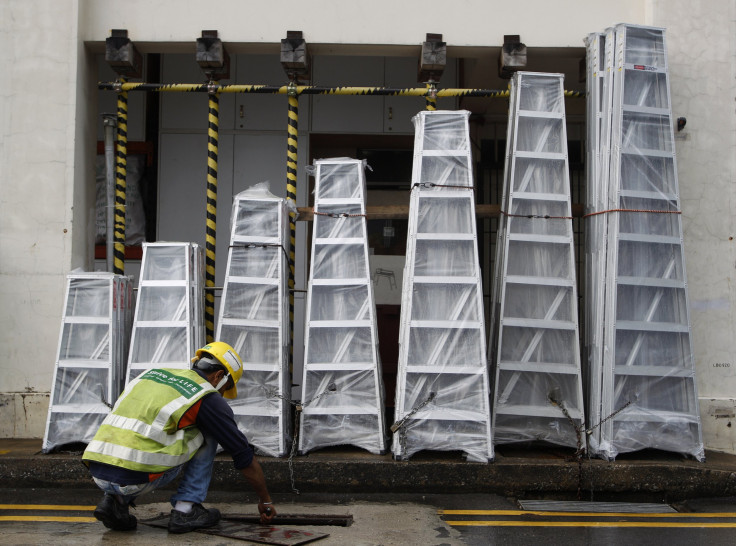Millennials' Best Chances Of Climbing The Ladder, According To Two Recent Studies

As the gap between those at the top and bottom of the income spectrum has widened, the socioeconomic ladder appears increasingly stretched and cluttered with obstacles. But two recent studies point to ways young Americans can get a leg up in the climb toward economic prosperity.
The average cost of attendance for the previous school year at a public, four-year university nearly hit $10,000, while that of private, non-profit four-year colleges edged closer to $33,500 — both more than triple tuition prices 40 years earlier, in 2016 dollars. Those who sought to climb the ladder by obtaining a degree are taking longer to pay off their loans, and the share of grads with more than $20,000 outstanding has doubled over the past 15 years, according to a new report from the Consumer Financial Protection Bureau. State funding for public colleges and universities, meanwhile, has fallen by nearly $9 billion since 2008.
A study published this week in the National Bureau of Economic Research, however, found that, among those who switched jobs in the decade or so since the turn of the millennium, less-educated workers were “disproportionately” likely to move up the ladder. They were also likely to do so more quickly than their college-educated counterparts, who more often remained with their employers for longer, even if those workplaces were relatively unproductive or lower-paying, possibly as a result of the specialization that comes with a degree.
Still, that trend only applied to periods of economic expansion, wrote the authors, from the University of Maryland and the U.S. Census Bureau. In periods of recession, younger, less-educated workers are more likely to be “shaken off” the economic ladder, and to stay at the bottom. That is, they were less likely to be hired out of unemployment during a downturn, and their general prospects were “disproportionately impacted by the business cycle,” the authors wrote, drawing on U.S. Census data.
For young people from lower-income families left with the sense that the fork in the road leads to two dead ends — skip the cost of college and ascend the ranks, only to face severe job insecurity, or obtain a degree and land a solid job, only to face mounting debt and a potentially sluggish climb up the ladder — another study, published in NBER in July, offered some answers.
Using data for more than 30 million college students between 1999 and 2013, researchers from Stanford University, Brown University, the University of California, Berkeley and the Federal Reserve found that certain middle-tier schools are going above and beyond when it comes to boosting their lower-income students’ chances of upward mobility.
Top-tier universities, such as those in the Ivy League, held the greatest opportunities for students to climb from the lowest to the highest income brackets. But their general inaccessibility to lower-income applicants, as evidenced by the small and hardly-changing number of lower-income students at those schools, effectively stunted their impact on socioeconomic mobility, according to the study. (Students from the top 1 percent, for instance, were 77 times more likely to attend an Ivy League university than those at the bottom 20 percent of the income distribution, the authors noted.)
John Friedman, an associate professor of economics at Brown University and one of the college study’s authors, stressed that the research wasn’t a case against attending the nation’s top universities, but evidence that, given the wide variance in outcomes among even similarly-ranked colleges, prospective students and those advising them should focus on outcomes, not just rankings.
“You should go to Harvard if you can — you don’t need researchers to tell you that,” he said. But for high school juniors and seniors who aren’t getting into the Ivy League and perhaps have a plethora of similar, middle-tier options, he added, “Some of those schools are going to be better than others, even if they say in the rankings, in the U.S. News and World Report, that they all look the same.”
U.S. News, Friedman said, focused more on inputs, like class size, whereas more rankings needed to focus on what happens to each college’s alumni — or, in other words, how upwardly mobile they were — after graduation.
Schools like the City University of New York and colleges within the University of Texas and California State University systems exhibited much higher “mobility rates,” defined by the authors as the rate at which students who enter college in the lower 20 percent of the income spectrum end up in the top 20 percent. The aforementioned colleges specifically had rates higher than 6 percent, while lowest-income students had, on average, a 2.2 percent chance of becoming what could be called “20-percenters” at the Ivies and similar elite universities. The reason, according to the authors, is either because they have figured out ways to reach potential high-performers from lower-income backgrounds, give their students the tools to become high-earners or both.
“Some of the schools will be really good at recruiting, some will be good at education and some [will be good at] both,” Friedman said, adding that he’s starting work on some follow-up work to find out.
Until then, it’ll be up to prospective students to do the research as they gaze up the socioeconomic ladder.
“Obviously going to a four-year college is a good thing,” he said. “But the four-year college you go to might matter… as much as going to a four-year school versus going to a two-year school.”
© Copyright IBTimes 2024. All rights reserved.






















